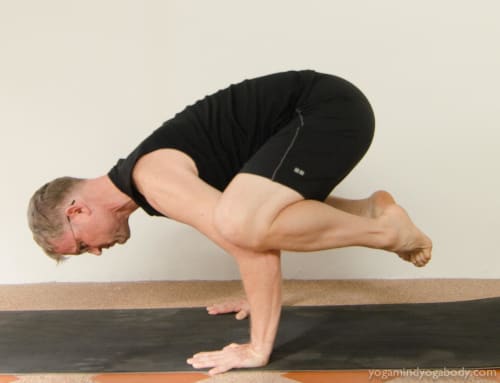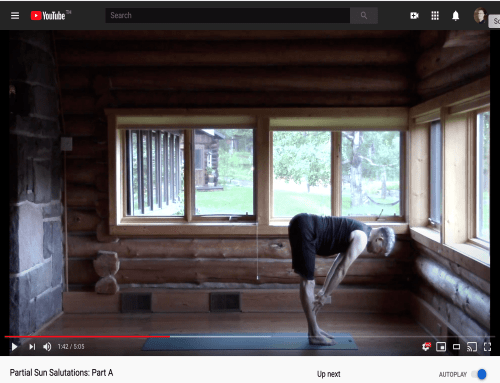There really isn’t much more to say than the title: Do less, feel more. It’s not about the difficulty or impressiveness of the poses you do, nor about how long you can hold them without hating them or collapsing into a heap of muscle spasms. It’s about how deeply you can get your whole being involved in each moment that you spend in each pose that you do, regardless of whether it is Tadasana or ‘Full’ Pigeon Pose.
Can you spend 10 seconds in Tadasana, fully present in each moment, fully present in each part of your body? It’s actually a very tall order. Start by seeing if you can feel two parts of your body at once, and then work your way up to an increasingly larger number of body parts. Eventually you may get to the point where you can feel most of your body at once for at least a split second, then a whole second, and eventually for the entire duration that you hold a pose. And then can you do it again for the next pose? And then can you do it in each moment of the transition between two poses? Richard Freeman likes to say that there are thousands of yoga poses that don’t have names yet, meaning that each of the infinite shapes your body makes as it transitions from, let’s say, Hasta Tadasana to Uttanasana, is a yoga pose worthy of your full awareness, your complete ability to feel.
If you thought Scorpion Pose was difficult, you ain’t seen nothing yet. But in equal measure, if you thought the rewards of nailing Scorpion were awesome, you ain’t seen nothing yet. Just wait until you harness the rewards of becoming fully present in one moment in time, and then doing it all over again in the next moment, and in the moment after that. And, yes, the one after that, too. While Scorpion is a fine pose, the problem with too much doing is that it can get in the way of feeling, so a worthwhile focus to bring to your practice, at least some of the time, is to do less, so you can focus on feeling more.
And when the ability to feel more while doing less spills off your mat into the rest of your life, imagine what that will do to you, and to your life, and to the lives that you touch.
Try it now: Sit in a comfortable seat, like Sukhasana, on a firm cushion, a stack of blankets, or a block. Align your hips horizontally by rolling your hip crests forward, or if that seems to involve too much doing, by moving the flesh out from under your sit bones towards the back. Feel how this adjustment of the hips allows your spine to move towards its natural double S curve relatively effortlessly, without the need to contract your back muscles, creating a sense of spaciousness with minimal effort. Observe your breath, and notice where you feel your breath in your body. Do you feel it on the skin just inside your nostrils? Can you feel it in the back of your throat, in your windpipe? Can you feel the expansion of your abdomen and your front ribs as you inhale? Can you feel your back ribs expand as well? Can you feel your spine elongating, your back muscles getting gently stretched? Can you feel your breath all the way down to your toes?
Wait a minute, you might say, my breath doesn’t GO all the way down to my toes.
But, of course, it does. Your breath travels, in the form of the oxygen carried by your bloodstream, to every living cell in your body. Because if it didn’t, those cells would cease to be living. Use your breath to spread your awareness to every single cell of your body, and observe the power and the peace that emerges from that level of engagement with the here and now. Some people call it attention or focus, but to me that doesn’t quite capture it, as your mind simultaneously becomes present everywhere at once. It’s a kind of focus, but at the same time, a complete defocusing. It’s awareness rather than attention. And when you tune into yourself like that, your mind literally works differently than it does when you are in the mind-state you find yourself in when you focus on doing, rather than being. When you feel more, your mind starts to work differently in ways that change your entire outlook on life, giving you a sense of connectedness to replace your usual sense of isolation, making you feel whole, rather than always lacking in some way.
Then follow your exhale out of your body into the space around you and begin to realize that the difference between inside and outside, between You and the Other, is not as definite as you once thought, as the carbon dioxide molecules created in the cells of your body — out of carbon and oxygen atoms that have been around for literally billions of years — diffuse into the atmosphere around you, and perhaps become absorbed by the leaves of grass by your feet, or float off into the atmosphere to dance around the globe for the next few millennia.
Do less, feel more. Over and out.






Leave A Comment